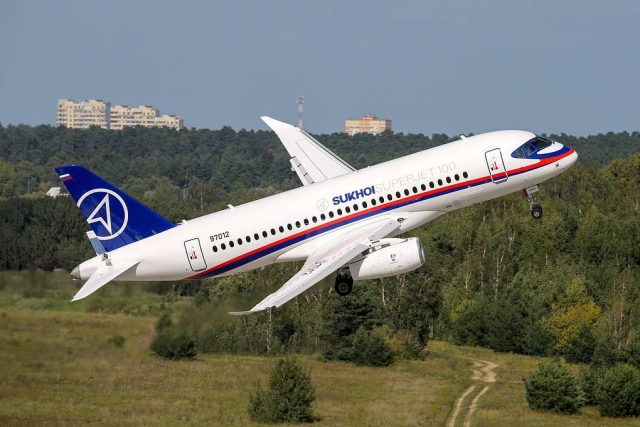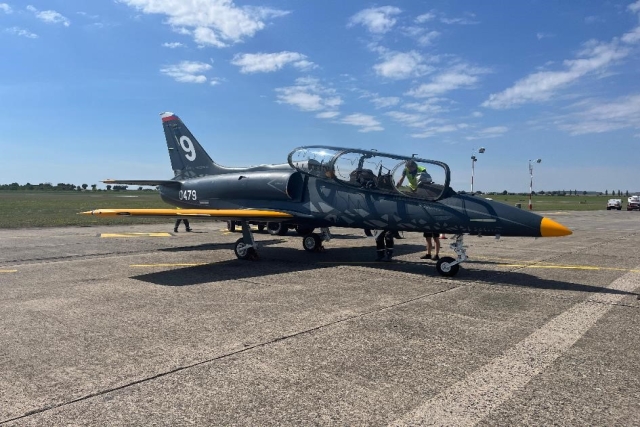IMDEX 2015 To Focus On Submarine Safety And Naval Engineering

Leck Chet Lam, Managing Director of Experia Events. (Photo/ExperiaEvents)
In an interview with Defenseworld.net, Leck Chet Lam, Managing Director of Experia Events talks about the upcoming IMDEX 2015 and the return of two strategic conferences – the International Maritime Security Conference (IMSC) and the Asian edition of the prestigious International Naval Engineering Conference (INEC@IMDEX Asia). According to Leck, these conferences will see the gathering of leading players from navies, commercial and military ship operators, designers, shipbuilders, manufacturers and defence-related organisations to discuss new developments and challenges faced by the naval and maritime defense industry.
DW : After the success of previous IMDEX Asia shows, what will be the highlight of 2015?
Leck Chet Lam: As we enter the final phase of preparations for IMDEX Asia 2015, we are pleased to announce that more than 80 per cent of exhibition space has been booked to date, with more than six months to the show. Leading players such as Damen, General Dynamics Canada, Lüerssen, MTU, Saab, ST Marine, ThyssenKrupp Marine Systems have already signed up to exhibit at IMDEX Asia once again. The show will also see first time exhibitors Ametek, Microflown Maritime, Strategic Marine, and Stone Marine. With each new edition of IMDEX Asia, we aspire to provide our exhibitors and visitors with a bigger and better experience. 15th Asia Pacific Submarine Conference (APSC) which brings together regional submarine operating navies and other navies and organisations with an interest in submarine safety will be held in conjunction with IMDEX Asia 2015, for the first time. Aside from APSC, IMDEX Asia 2015 will also see the return of two strategic conferences – the International Maritime Security Conference (IMSC) and the Asian edition of the prestigious International Naval Engineering Conference (INEC@IMDEX Asia). These conferences will see the gathering of leading players from navies, commercial and military ship operators, designers, shipbuilders, manufacturers, defence-related organisations and academia to discuss new developments and challenges faced by the naval and maritime defense industry.
DW : What are the challenges in International Maritime Security? How does Asia fare, in terms of maritime security and what are its current needs?
Leck Chet Lam: Maritime Security continues to be a major challenge, particularly in Asia. Globally, there has been an economic and a maritime shift to Asia, particularly East Asia. The demand for offshore oil and gas will continue to drive maritime sovereignty issues. Currently, intra-regional trade is growing at a faster rate than extra-regional trade, with a significant impact on shipping traffic and the need for increased maritime security. Meanwhile, regional defence budgets will continue to increase, fuelled by economic growth. At the same time, tensions are rising in North East Asia, while territorial disputes continue in the South China Sea, among several sovereign states. Addressing international maritime security challenges is therefore a pressing need. IMDEX Asia 2015 provides the opportunity to address these challenges through its strategic conference: International Maritime Security Conference 2015 (IMSC) Themed “Safe and Secure Seas - Strengthening Cooperation in Maritime Security”, IMSC brings together Chiefs of Navy, Directors-General of Coast Guard, government officials and key industry players from around the world to discuss threats to maritime safety and security, and develop frameworks and solutions to deal with the security challenges that threaten and disrupt sea lines of communication.
DW : Will unmanned vehicles play a major role in defining maritime security?
Leck Chet Lam: The role of unmanned systems becoming an increasingly key component in conflicts is not just limited to battles on the ground but also maritime defence as well. According to a recent report issued by The Office of Naval Research, the US Navy is said to be using armed, robotic patrol boats with no sailors on board to escort and defend warships moving through sensitive sea lanes within a year. This new robotic patrol vehicle is one of the many products manufacturers are customising for maritime applications, and I believe more will follow, due to the wide range of mission options available on naval unmanned systems. The use of unmanned systems will improve capabilities in safeguarding the oceans, while addressing the issue of high manpower costs or the shortage of maritime enforcement personnel in selected countries. The growing interest in unmanned systems is also reflected in IMDEX Asia 2015, with some participating exhibitors indicating their interest to showcase their systems at the show.
DW : Could you elaborate on the submarine conference?
Leck Chet Lam: The 15th Asia-Pacific Submarine Conference (APSC) brings together regional submarine operating navies, and other navies and organisations with an interest on submarine safety to discuss issues on submarine survivability, escape and interoperability of rescue assets. APSC helps to foster mutual understanding and cooperation, and is an important knowledge-exchange platform for all participants. The Republic of Singapore Navy will host APSC in conjunction with IMDEX Asia 2015 at Changi Exhibition Centre, Singapore. This is the first time it will be held alongside a premier international maritime defence show, IMDEX Asia.
DW : How does regional naval procurement market look? What are the current trends per country?
Leck Chet Lam: Against a backdrop of defence budget cuts in the USA and naval forces being downsized in Western countries, Asia has emerged as the new frontier for growth in the naval and maritime industry. The Asia Pacific region has surpassed Europe to become the world’s second largest naval market, after the United States of America. According to market analyst firm AMI International, the Asia Pacific region is expected to spend around US$200 billion on new ships and submarines by 2032, making up roughly 25 percent of the global projected new ship market. Global security solutions firm The Stimson Centre further suggests that most of the increase in Asian naval capability will be in sophisticated capabilities such as anti-submarine, anti-air, ballistic missile defence and naval strategic defence forces. What this represents for IMDEX Asia is another very exciting year. IMDEX Asia 2015 is taking place against a backdrop of remarkable growth in the Asia Pacific naval industry, and is well-placed to take advantage of Singapore’s strategic location at the heart of this flourishing region, providing a springboard for exhibitors to tap into the rich opportunities available here.










